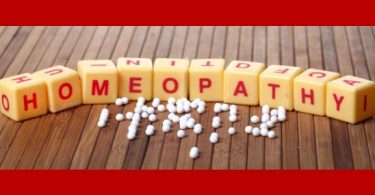Big 5 personality traits (MBTI)
In this book I investigate the possibility of assigning mineral-like ’Stages’ to remedies from the plant kingdom.
To do this we have to define what we mean by a ’Stage’ quite carefully. Dr. Sankaran has described 10 miasms using psychological and physical parameteres such as intensity and duration of the complaint.
– Can the same parameters be applied to the Mineral Kingdom?
– Does modern psychology offer any further personality parameters that we can usfully employ to describe a sequence of ascending Stages?
I conclude the debate by offering a chart of all the major A.P.G. (angiosperm phylogeny group) plant families, sorted into fairly obvious and clear-cut Stages. To define stages we first need to define ’normality’.
My first line of research for the book was to familiarize myself with the personality measures and parameters in use today – both the latest edition of the DSM and the WHO use the BIG 5 personality inventory extensively.
On top of this it has become very popular with big business, where it is frequently used by personnel departments to select new staff. It easily highlights desirable personality traits, and this gives us as good an indication as any of what society finds desirable in a person. It is not only for boffins and psychologists.
The Big 5 personality inventory has almost become a universal standard of ’normality’ and ’deviance’.
Can we afford to ignore this trend? If not how can we use it?
Low score indicates reserved timidity; high score – sociability with a strong sense of ones own status.
[2] AGREEABLENESS : Low suggests altruism and modesty; high toughness and antagonism.
[3] CONSCIENTIOUSNESS : Low impulsive, negligent; High responsible or fastidious.
[4] NEUROTICISM: Low insecure, anxious, emotional; High, relaxed and stable.
[5] OPENNESS: Low, bored conservative; High, cultured and creative.Can you read these descriptions without remedy suggestions popping up? Anacardium? Argentum? Pulsatilla? Arsenicuam? Bellis?
The list of possible remedy (or more properly, rubric) associations provoked by this ’comparative word list’ is virtually endless. This is why I believe that this kind of analysis could be a usefully intuitive diagnostic tool in Homeopathy.
The modern Big 5 tests described above were derived from the Myers Briggs Indicator, which tested more classical traits, which were described in Jung’s Psychological Types (1921).
Jung proposed two dichotomous pairs of cognitive functions:
- The “rational” (judging) functions: thinking and feeling
- The “irrational” (perceiving) functions: sensing and intuition
He felt that these functions are expressed in either an introverted or extraverted form.
| Dichotomies | |
|---|---|
| ATTITUDE Extraversion (E) – | (I) Introversion |
| PERCEIVING Sensing (S) – | (N) Intuition |
| JUDGING Thinking (T) – | (F) Feeling |
The final dichotomy, added by Myers/Briggs tests an individuals overall preference for thinking (logic) or sensing (empathy). Further scrutiny of these dichotomies emphasises the differences between individuals requiring remedies from the Mineral Kingdom, the Plant Kingdom or in some cases (consider ‘sensing’ as a possibility) the Animal Kingdom.
| preference for the outer world and one’s own action | (E) Extraversion | V | Introversion (I) | preference for inner self and ideas to understand and protect or nurture it |
| irrational – gathers information by focusing on certain facts | (S) Sensing |
V
|
Intuitive (N) | irrational – gathers information by interpreting patterns, and meanings. |
| highly rational – decides by using logic and analysis | (T) Thinking |
V
|
Feeling (F) | less rational – decides according to personal values |
| organises, plans, controls, firm actions – quick to decide | (J) Judging | V | Perceiving (P) | acts with flexibility, spontaneity, and understanding – relatively slow to decide |
A more detailed description of the five types can be found on the MBTI entry on Wikipedia.
Just to recap, Jung felt that people were fundamentaly either rational or irrational i.e sensing and feeling or logical and analytical … the same criteria we were taught to use at Homeopathy College to differentiate between KINGDOMS.
Mineral patients being the more organised, rational individuals. Plant Kingdom patients being more emotional, ’fuzzy’ thinkers, relying on their feelings to make decisions, and Animal patients, also relying on feeling, but much more on sensing than others.
As we now know the more rational, organised and structured approach to life found in Mineral Kingdom individuals correlates well with social position and more importantly, with the chemical structure found in the elements of the periodic table. Hence the popular ‘Element Theory’ in Homeopathy. The system derived from the Element Theory works quite well most of the time, but it can’t be applied too dogmatically…
I would describe one male patient as a Stage 10 Kali! What??? Well, he’s both Kali and Palladium – a confident, original performer with many difficulties relating to work and duty… not as unusual as you might think in these difficult times. Each sphere of endeavour requires consideration, and potentially needs support, and can develop its own sphere of ’Kentian’ pathologies … relating to frustrations at work (Ferrums) or creativity (Silver).
The ‘classical’ (Kentian) approach, with the faithful recording and analysis of rubrics still has a crucial role to play in describing the case and differentiating remedies.





